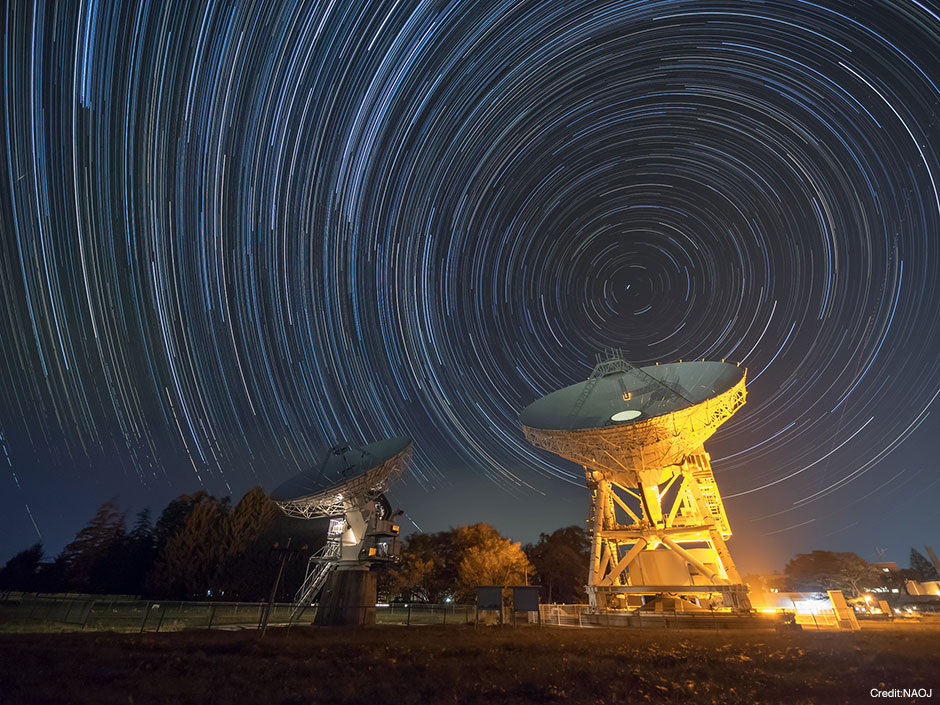Diurnal Motion of the Northern Sky at 39°8’ N
Night Scape Photograph・

In 1899, six observatories were built around the world along the 39°8’ N latitude line. One of them was the International Latitude Observatory, which was the predecessor of Mizusawa VLBI Observatory. North latitude can be determined from the altitude of Polaris. Therefore, the diurnal motion in the northern sky has been photographed many times along with the buildings present during various eras of the more than 100 year history.
Stars of the Northern Sky showing their Diurnal Motion Tracks
Above the VERA Mizusawa Station radio telescope (right) and the 10-m radio telescope (left), which are separated by 24 meters, the motion of the shining stars was followed with a wide-angle lens for two and a half hours. Thanks to short exposure times and brightness matching technology, the star trails extending until almost morning twilight were captured. Above the VERA Mizusawa Station, at an elevation of about 39°, Polaris shines almost unmoving. If you look closely to the left of Polaris, between and slightly above the two telescopes, the stars of the constellations Cassiopeia seem to have become long, thin lines. Above these the arcs of stars from the constellations Perseus to Auriga run together. On the left, there extend the stars in the constellation Taurus which holds Subaru (the Pleiades star cluster). If you look to the right of Polaris, the dim stars belonging to the constellations from Ursa Minor to Draco stretch out. And, part of the Big Dipper can be seen on the upper right. Because of the wide angle, on both edges of the image, not only trees and buildings, but also the stars are distorted, giving the image a unique composition.
Text by: Osamu Kameya (Mizusawa VLBI Observatory)
Translation by: Hiroko Tsuzuki and Ramsey Lundock (Public Relations Center, NAOJ)
Image Data
| Camera | OLYMPUS OM-D E-M1 |
|---|---|
| Lens | OLYMPUS M.ZUIKO DIGITAL ED 7-14mm F2.8 PRO |
| Exposure | F4.0, ISO1600, composite of 1154 frames taken with 8 second exposure each; about 2 hours and 30 minutes total exposure time |
| Date | 1:58 October 27, 2016 |
| Photographer | Yutaka Iijima |
| Credit | National Astronomical Observatory of Japan |
| Terms of Use | This image can be used without permission for research presentations, conferences, and school classes. In other cases, it cannot be used without prior permission. If you would like to use it, please fill out an application. In the case of commercial use, a photograph usage fee might need to be negotiated with the photographer, Mr. Yutaka Iijima. |
Downloads
- Medium resolution (940 x 705, 206KB)
- High resolution (2000 x 1500, 2.5MB)
- Maximum resolution (4608 x 3456, 9.5MB)